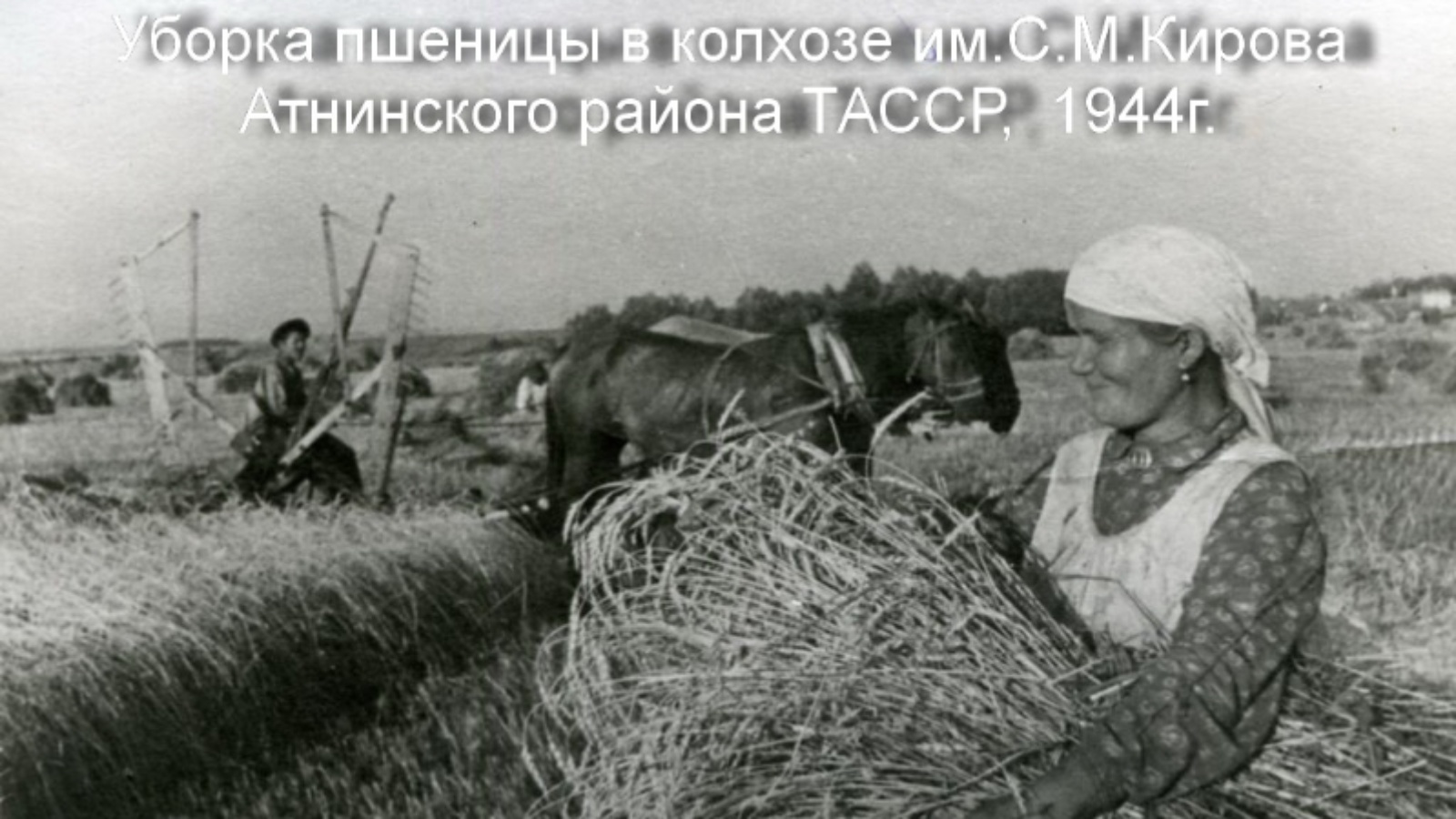Agricultural production of the Republic of Tatarstan during the Great Patriotic War: the contribution of rural workers to the Victory

The Ministry of Agriculture and Food of the Republic of Tatarstan has great respect for the veterans of the Great Patriotic War of 1941-1945 and those who worked in the rear during these years, providing food supply to the country.
With the beginning of the war, the importance of Tatarstan, as well as other rear regions of the country, in the food supply of army and population increased significantly. This happened for objective reasons: the USSR already in the first months of the war temporarily lost the most important agricultural areas in the west of the country: the enemy captured territories that accounted for 47% of all acreage and about 50% of livestock. However, as sources show, the expansion of agricultural production in the TASSR was associated with exceptional difficulties. The supply of tractors and agricultural machinery has almost stopped. Most of the tractors and cars available on farms (up to 80%) MTS and collective farms were transferred for the needs of the army. The problem of fuel was acute. Attempts to replace agricultural machinery with horses also failed. Already in the first year of the war, 10% of the total number of horses of the republic was mobilized to the front, and 10-20% of the remaining ones were constantly diverted by the state to perform horse-drawn duty.
Because of the sharp reduction of machinery, live draft, and energy resources, manual labor has become particularly important. But the solution of the personnel issue in the agricultural sector was accompanied by even greater difficulties. According to experts, the number of rural working-age population in our region has decreased by more than one-third during the war years. In addition, men were primarily subject to general mobilization. It should be added that even the available rural population could not be fully used in the agricultural sphere, since it was the villagers who served as the main source of replenishment of the labor force for the republican enterprises and were subject to mobilization, according to the orders.
Women became the main leading force in the agricultural sector during the war. In the collective farms of Tatarstan, they made up to 70-75% of the total number of workdays, they also made up 75% of the permanent workers of state farms.
Schoolchildren also kept up with the adults. Child labor was especially widely used in weeding, haymaking, threshing, harvesting, etc. A school year in rural schools began later than expected.
On April 13, 1942, the Central Committee adopted an emergency resolution that provided for an increase in the mandatory minimum workdays for villagers: for the adult population, it was set at 100-150 workdays per year, for teenagers 12-16 years old – at least 50. If the collective farmers failed to comply with this minimum without valid reasons, they were considered to have dropped out of the collective farm and were deprived of their homestead. The development of workdays was an even more important task due to the fact that the norms for issuing food to peasants during the war period depended on their number (unlike the townspeople, collective farmers were not provided with cards). But collective farms issued food to their employees only after fulfilling the mandatory state supplies of agricultural products.
Fulfilling the tasks of the party and the government, the villagers worked with full dedication. Eyewitnesses of those years say that after hard, grueling work, they did not even have the strength to walk home. And yet, despite the double-triple efforts of the collective farmers, the situation in the agriculture of Tatarstan remained difficult. Z.I.Gilmanov reflected an objective picture of the state of agricultural production in his works. According to the data analyzed by him, during the war period, the acreage in the republic decreased from 3,199 thousand to 2,130 thousand hectares, i.e. by almost one third. The area under wheat (the main grain crop) decreased by 2 times, under forage crops- by 2.5 times. A small increase in the acreage occurred only under potatoes and vegetable-melon crops. In addition, a new agricultural crop – sugar beet - has appeared in the republic. The volume of tractor work was significantly reduced, which in turn affected the level and degree of mechanization of the main agricultural work. Also during the war years, the level of agricultural machinery decreased: the supply of mineral fertilizers almost stopped. As a result, the yield per hectare decreased by more than half, and the annual grain harvest for 1942-1945 decreased by more than 2.5 times.
At the same time, the agricultural sector of the republic during the four years of the war produced and supplied the state with 131 million pounds of bread, 39 million pounds of potatoes and vegetables, 56 million pounds of meat, 200 million liters of milk, tens of thousands of pounds of butter, lard, honey, hay and other products. It was a notable contribution to the Victory. Denying themselves the most necessary things, rural workers gave the state most of the received products.